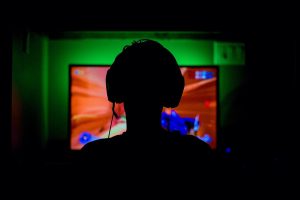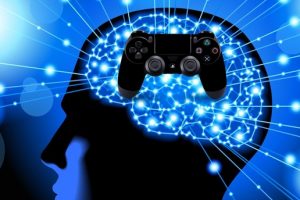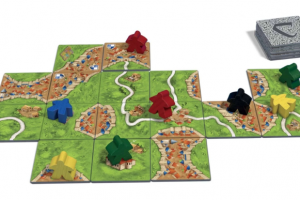Gaming was supposed to be fun. That’s how it started for most of us – picking up a controller after school, losing ourselves in virtual worlds, and feeling that pure rush of accomplishment after beating a tough boss. But somewhere along the way, many gamers find themselves staring at their game library, feeling nothing but exhaustion.
This isn’t just about being tired after a long session. Gaming fatigue runs deeper, affecting how we engage with our favorite hobby and, in some cases, spilling over into other areas of life.
The Digital Entertainment Overload
Modern gaming culture operates on a completely different scale than it did even a decade ago. We’re not just dealing with one or two games anymore – we’re drowning in choices. Steam libraries with hundreds of unplayed titles, subscription services adding new games monthly, online casino games and social media constantly showing us what we’re missing out on…
The always-on nature of modern gaming creates unique pressures. Whether you’re grinding daily quests, keeping up with seasonal events, or maintaining ranks in competitive games, there’s always something demanding your attention. Even relaxing activities like playing offshore poker games can become sources of stress when they transform from casual entertainment into obsessive pursuits.
This constant connectivity means gaming never truly stops. Push notifications remind you about login bonuses, friends are always online expecting you to join their sessions, and FOMO (fear of missing out) drives you to participate in limited-time events even when you’d rather take a break.
Physical Symptoms That Creep Up Slowly
Gaming fatigue isn’t just mental – it manifests physically in ways that many players dismiss as normal gaming side effects. Eye strain from staring at screens for hours becomes so common we forget what it feels like to have relaxed vision. Neck and shoulder tension from poor posture accumulates over months and years.
Hand and wrist pain from repetitive controller use often gets ignored until it becomes genuinely debilitating. Sleep patterns get disrupted not just from late-night sessions, but from the blue light exposure and mental stimulation that makes it hard to wind down properly.
The sedentary nature of extended gaming sessions affects circulation, energy levels, and overall physical fitness. What starts as harmless fun gradually becomes a source of chronic low-level discomfort that colors every gaming experience.
Mental and Emotional Burnout
The psychological aspects of gaming fatigue are often the most complex to untangle. Gaming can become a coping mechanism for stress, boredom, or social anxiety, but when the activity itself becomes stressful, it creates a problematic cycle.
Competitive gaming environments, in particular, can foster toxic relationships with performance and achievement. The pressure to improve, maintain rankings, or keep up with more skilled players transforms entertainment into work. Even single-player games aren’t immune – completion anxiety and perfectionist tendencies can turn relaxing adventures into stressful checklists.
Social dynamics within gaming communities can also contribute to fatigue. Feeling obligated to participate in guild activities, maintaining online friendships that exist primarily through gaming, or dealing with toxic behavior from other players all add emotional weight to what should be leisure time.
The Content Treadmill Problem
Game developers have mastered the art of keeping players engaged, but this mastery sometimes works against player well-being. Live service games, in particular, are designed to become habits rather than entertainment. Daily login bonuses, battle passes with time-limited progression, and seasonal content create artificial urgency that can make gaming feel like a job.
The paradox of choice also plays a significant role. Having access to thousands of games should theoretically make gaming more enjoyable, but research shows that too many options often lead to analysis paralysis and reduced satisfaction with whatever choice we make. Gamers spend more time browsing their libraries than actually playing, creating frustration and guilt about “wasted” purchases.

Breaking the Cycle
Preventing gaming fatigue starts with honest self-assessment. Pay attention to how you feel before, during, and after gaming sessions. Are you playing because you want to, or because you feel like you have to? Are you enjoying the experience, or just going through the motions?
Setting clear boundaries is crucial but often difficult in a medium designed to blur them. Decide on specific gaming windows and stick to them. Use built-in parental controls or third-party apps to enforce time limits if self-regulation proves challenging. The goal isn’t to eliminate gaming, but to preserve it as a source of genuine enjoyment.
Diversify your gaming diet. If you’ve been doing competitive gaming for months, try something completely different. Modern gaming evolution shows us there are more types of gaming experiences available than ever before – from cozy farming simulators to narrative adventures that can be completed in a single sitting.
Creating Healthy Gaming Habits
Physical comfort should never be an afterthought. Invest in proper seating, monitor positioning, and lighting. Take regular breaks – the 20-20-20 rule (every 20 minutes, look at something 20 feet away for 20 seconds) helps prevent eye strain. Simple stretching routines between matches or chapters can prevent the buildup of physical tension.
Consider gaming as part of a balanced lifestyle rather than your primary leisure activity. Engaging in physical activities, creative hobbies, and face-to-face social interactions provides contrast that makes gaming feel fresh when you return to it.
Be selective about which games deserve your ongoing attention. Not every game with daily content updates needs to be part of your routine. It’s okay to let battle passes expire and miss limited-time events if they’re contributing to your fatigue.
The Social Aspect of Recovery
Gaming fatigue often affects relationships, both within and outside gaming communities. Be honest with gaming friends about needing breaks or wanting to try different types of games. Good friends will support your well-being over maintaining consistent gaming schedules.
If gaming has become your primary social outlet, consider diversifying your social activities. This doesn’t mean abandoning gaming friendships, but rather ensuring they’re not your only source of social connection.
For some, gaming fatigue signals deeper issues with time management, stress, or mental health. There’s no shame in recognizing when gaming has become an unhealthy coping mechanism and seeking professional support when needed.
Recognizing When to Step Back
Sometimes the best treatment for gaming fatigue is simply stepping away. This doesn’t have to be permanent – many gamers find that taking breaks ranging from a few days to several months helps them rediscover what they loved about gaming in the first place.
During breaks, pay attention to how you feel and what activities naturally fill the time you used to spend gaming. Often, these insights help create a healthier relationship with gaming when you choose to return.
Conclusion
Gaming fatigue is real, common, and treatable. It’s not a sign of weakness or failure – it’s a natural response to an activity that has become unbalanced in your life. The gaming industry will continue to evolve in ways that challenge our ability to maintain healthy relationships with digital entertainment, but awareness and intentional choices can help preserve gaming as a source of joy rather than stress.
Remember that you have control over your gaming experience. You don’t owe your time to any game, developer, or community. The best gaming experience is one that leaves you feeling energized and satisfied, not drained and obligated. By recognizing the signs of gaming fatigue and taking proactive steps to address them, you can maintain a lifelong love of gaming without sacrificing your well-being.






 Your total news and information resource for all things Science, Technology, Engineering / Mathematics, Art, and Medicine / Health.
Your total news and information resource for all things Science, Technology, Engineering / Mathematics, Art, and Medicine / Health.
Leave a Comment